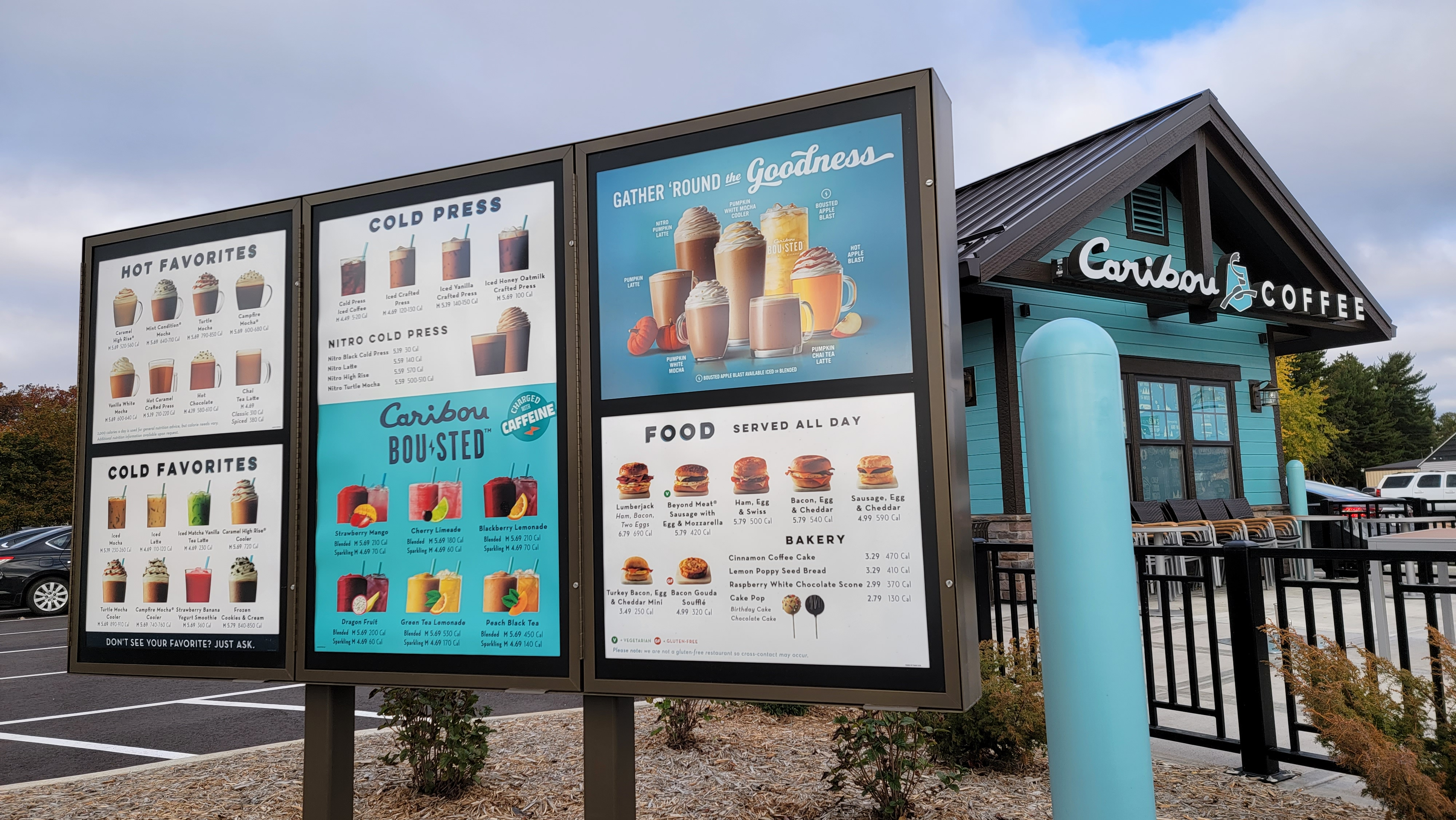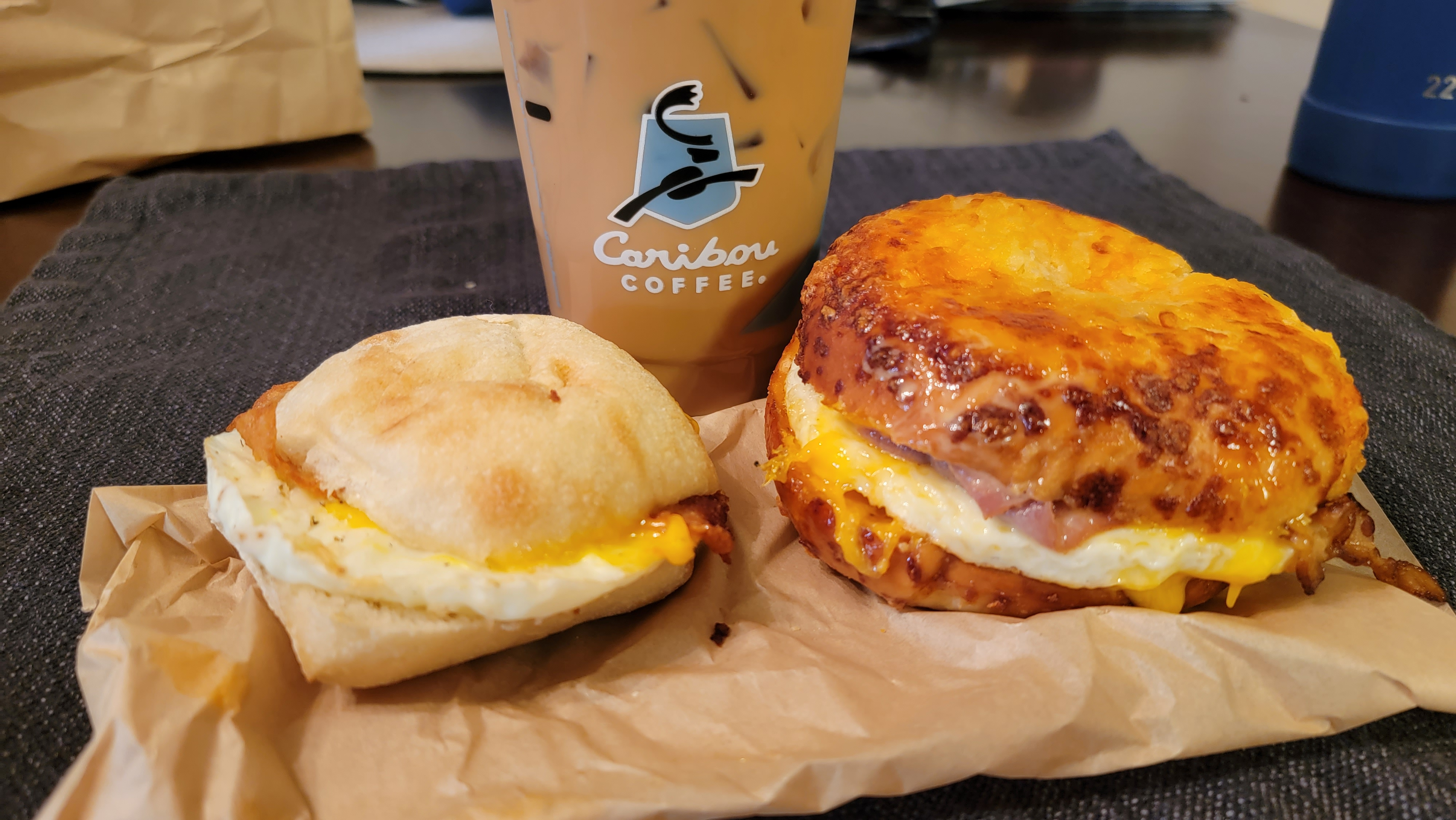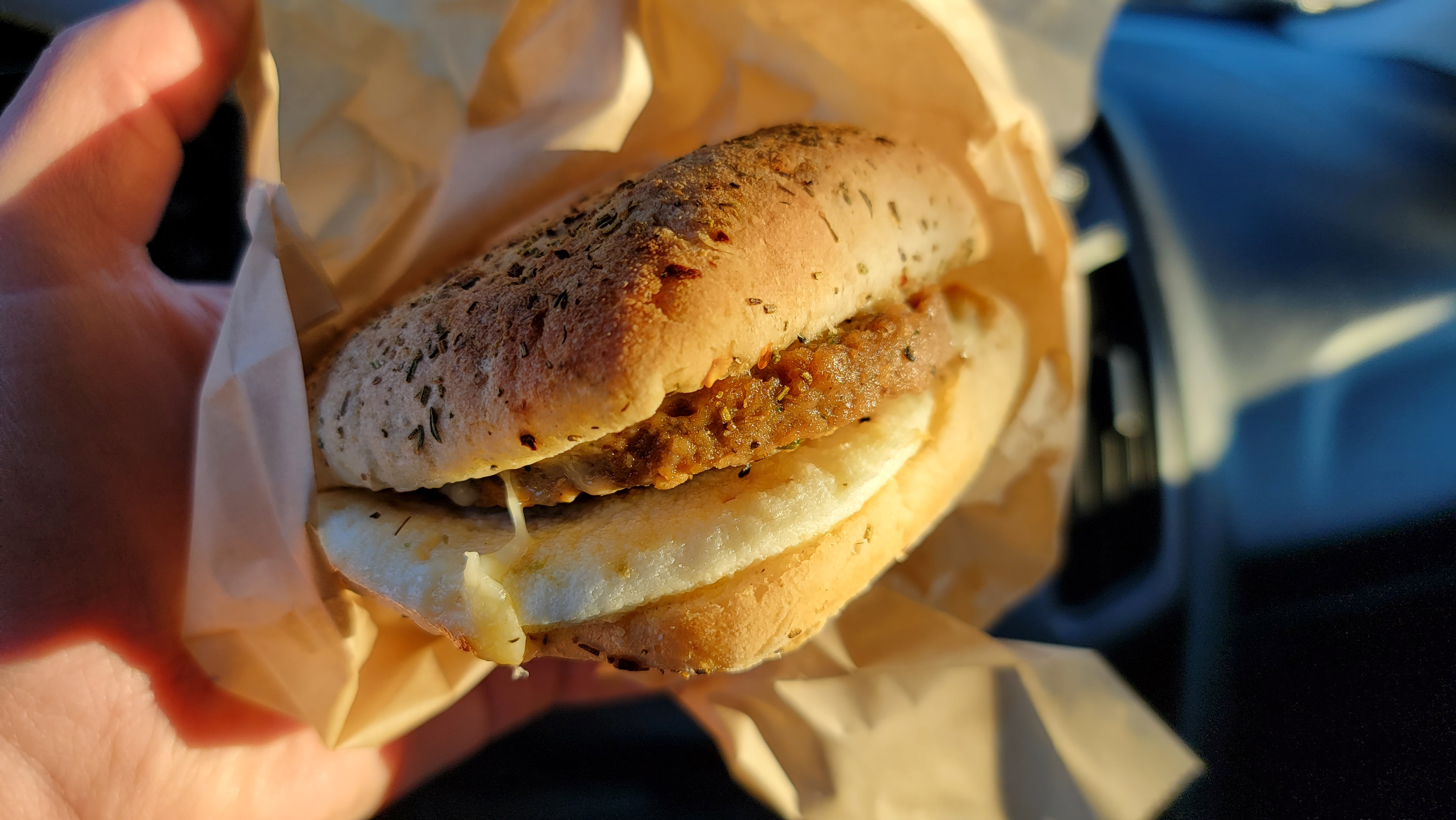Caribou Coffee Does Breakfast Better Than Starbucks
As this regional favorite expands, our breakfast options mount.
All right, I'll say it: Starbucks breakfast isn't great. Feel free to call me a hypocrite, as I've eaten more of the chain's sandwiches and delicious (but overpriced) egg bites than I'd care to admit. Still, it's never been particularly good. And there's at least one other coffee chain whose breakfast is better.
When I pick up a Starbucks turkey bacon sandwich or a wrap with spinach, egg, and feta, it isn't because I'm craving it. It's a matter of nutritional convenience, keeping me from making another stop.
Recently, Caribou Coffee opened its first location in my area. My previous experience with this Minneapolis-based company had been limited to airports (never a great measuring stick) and the occasional bag of beans from the grocery store. But after sampling a good chunk of the Caribou menu, I've come to a firm conclusion: Caribou's all-day breakfast menu runs circles around Starbucks.
Just look at the options: A chicken chorizo burrito, maple waffle sandwich, and a souffle with bacon and gouda? My local store has a limited menu, so I haven't tried them all. Even so, I managed to find three items that leave the competition in the dust.

Eat Caribou’s Lumberjack if you’re aiming to skip lunch
Here's the description of Caribou's largest breakfast sandwich, straight from the company's website: "Cherrywood smoked ham, bacon, cheddar cheese, two cage-free fried eggs, and peppered cream cheese on a hash brown bagel."
You had me at "hash brown bagel." This kind of carb-on-starch craziness is the kind of thing that gets me out of bed in the morning. And we need to talk about the eggs. Caribou's "cage-free" ovum have been excellent every time I've visited.
There's something about the assembly, too. The sandwiches feel as though someone actually handled and arranged the ingredients, so I asked if this was so.
"No," came the answer. Each sandwich (at least at the small franchise locations) is simply reheated from frozen. Could have fooled me!
Caribou’s Turkey Bacon, Egg, and Cheddar Mini is delicious and affordable
For a long time, Starbucks' Turkey Bacon, Cheddar & Egg White sandwich was my go-to fast food breakfast. Despite the cardboard taste and texture of its bun, I enjoy the flavor and slight chewiness of the meat.
But Caribou's version blows the competition away. Its turkey bacon is crispier than its Seattle counterpart, a nice pairing with the single egg and slice of cheese. But what elevates this one is the bun. Caribou's ciabatta is warm, airy, and almost good enough to eat on its own. Where Starbucks' version can be a chore to get through, this is like eating a delicious breakfast pillow.
The Beyond Meat Sausage with Egg and Mozzarella is an unlikely star on the Caribou menu
Look, I'm a fan of plant-based meat alternatives. Whenever a big chain comes out with a new item featuring one of these proteins, you can bet your soybeans I'll be there to give it a try. And I can say, without question, that Caribou's entry is my favorite of the breakfast bunch.
Dunkin's Beyond Breakfast Sandwich (R.I.P.) was good, and I've eaten enough Starbucks Impossible Breakfast Sandwiches to account for an entire Impossible hog. But Caribou's option, shown here bathed in a golden October dawn, was far and away my favorite.
The patty, though tasty, isn't the difference maker. It's the mozzarella, which adds a wonderful, creamy texture to the entire affair. And that bun, with its lovely herbs and spices? Delectable.
But what about Caribou’s coffee?
Every coffee chain has its devotees. But if we're taking local coffee shops out of the equation, Starbucks is still my jam. The cold brew and iced shaken espresso still rock the beans off both Dunkin' and Caribou.
I will say, however, that you seem to get more coffee per dollar with Caribou. And the iced lattes are simple and craveable. I've never had bad coffee there, and the price is generally right. Dunkin', meanwhile... Well, I'm not going to make any friends by completing that sentence.
When viewed with a critical eye, the Caribou menu features a lot of the same: protein, egg, and cheese slapped between some form of bread. But if Caribou has chosen a well-worn path, it has certainly made the most of it. Yes, Starbucks has "better" coffee. But for your morning one-two punch, a detour to Caribou is well worth your time.


